Wendy Kriz Evans
Year of birth: 1977
Where do you live: Cambridgeshire
Your education: Maths degree and Actuarial exams.
Describe your art in three words: Vibrant, textured, and joyful.
Your discipline: Abstract expressionism.
Website | Instagram
Can you tell us more about how you rediscovered your passion for painting after 30 years? What was that journey like for you?
Thirty years sounds like a lifetime, but it’s as if I put down my brush, stepped into my career, and picked it straight back up again. I partied my way through the ‘90s managing to earn a maths degree and land a job in the City of London. Then came marriage, kids, a move to the countryside, a year-long stint in Toronto and a divorce.
With my new husband Tom and three bonus step-sons, I’ve rediscovered my sense of self. The dining table became a makeshift studio and I painted until I could no longer stand. That first weekend’s work, though different from what I’ve done since, unlocked something within me.
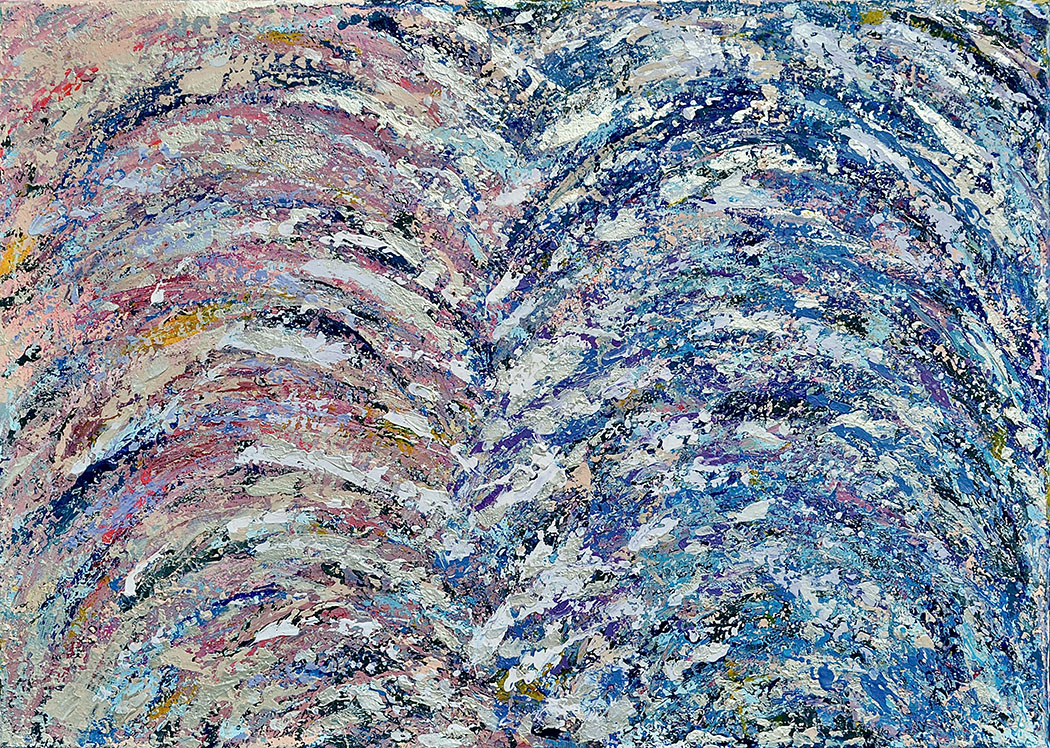 Wendy Kriz Evans | Pink And Blue Waves | 2024
Wendy Kriz Evans | Pink And Blue Waves | 2024
How has your role as a consultant to insurers, including Lloyd’s syndicates, influenced your artistic process and style?
Our culture often views holding opposing traits as odd. However, other cultures recognise these can be complementary, forming a dynamic system where the whole transcends the individual parts. While my structured job provides satisfaction and rigour, painting allows for freedom and creativity. The meticulous planning in my professional life enables me to start painting without a predetermined outcome. Lloyd’s rich history contrasts with my vibrant, modern art.
Daily decisive choices in consulting has given me the confidence to complete a painting. Sharing personal emotions through my art makes me feel vulnerable, so I use progress photos to gain perspective and refine my vision.
Your paintings have a very distinct texture and depth. Can you walk us through your process of building up layers and creating such tactile works?
I spread vibrant colours of paint with a palette knife. Then, using a tapping motion, I lift the paint away from the surface, creating initial texture. Each layer builds on the previous one, capturing and enhancing the paint rising furthest from the canvas. This creates a rich texture, resulting in the distinct tactile quality of my work.
What draws you to abstract art, and how do you find it peaceful and calming compared to other styles?
I truly find my voice through abstract painting. I love the limitless possibilities of abstract art, where it can be anything I imagine. One day, a pink line on a canvas might remind you of a pregnancy test, stirring feelings of anticipation, joy, or anxiety. The next day, you recall a cat scratch on your hand with memories of soft fur and playfulness. Abstract art gives me permission to let go of my worries and let my mind wander.
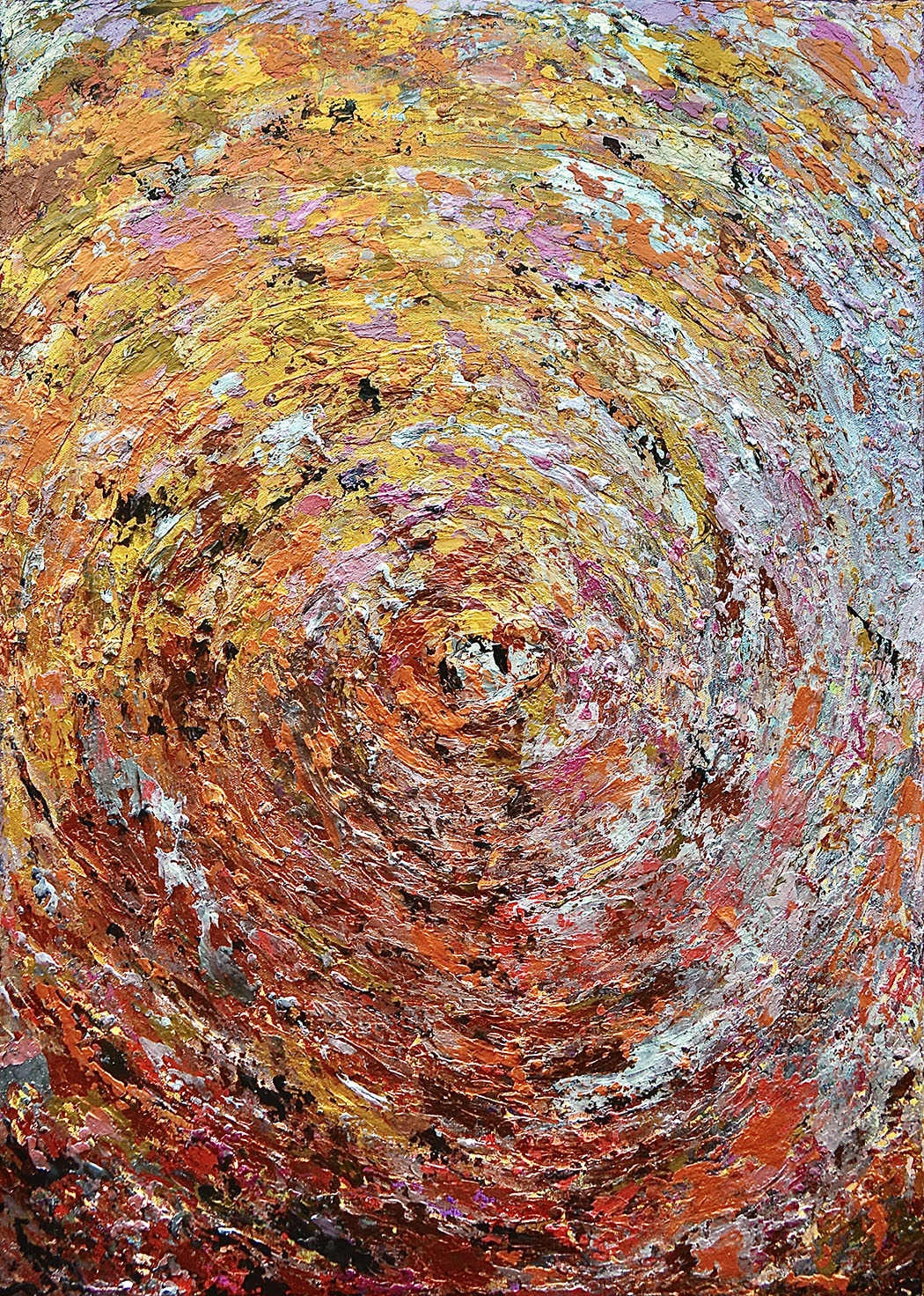 Wendy Kriz Evans | Sun-Joy | 2024
Wendy Kriz Evans | Sun-Joy | 2024
Can you share the inspiration and story behind some of your specific works like “Sun-Joy” and “Sun-Love”? What emotions and thoughts were you expressing through these paintings?
“Sun-Joy” was inspired by a rare sunny day, and the joy of feeling the sun’s warmth. I also felt incredibly loved and supported as my husband had asked me to create the painting. These emotions are reflected in the vibrant colours and flowing curves of the piece. My choice of gold and the sunny day inspired thoughts of the sun’s structure, which is echoed in the circles throughout the painting.
“Sun-Love” was similarly inspired. Tom was so pleased with “Sun-Joy” that he wanted another painting to accompany it. This piece continued the theme of warmth and affection, reinforcing the joy and love that influenced its creation.
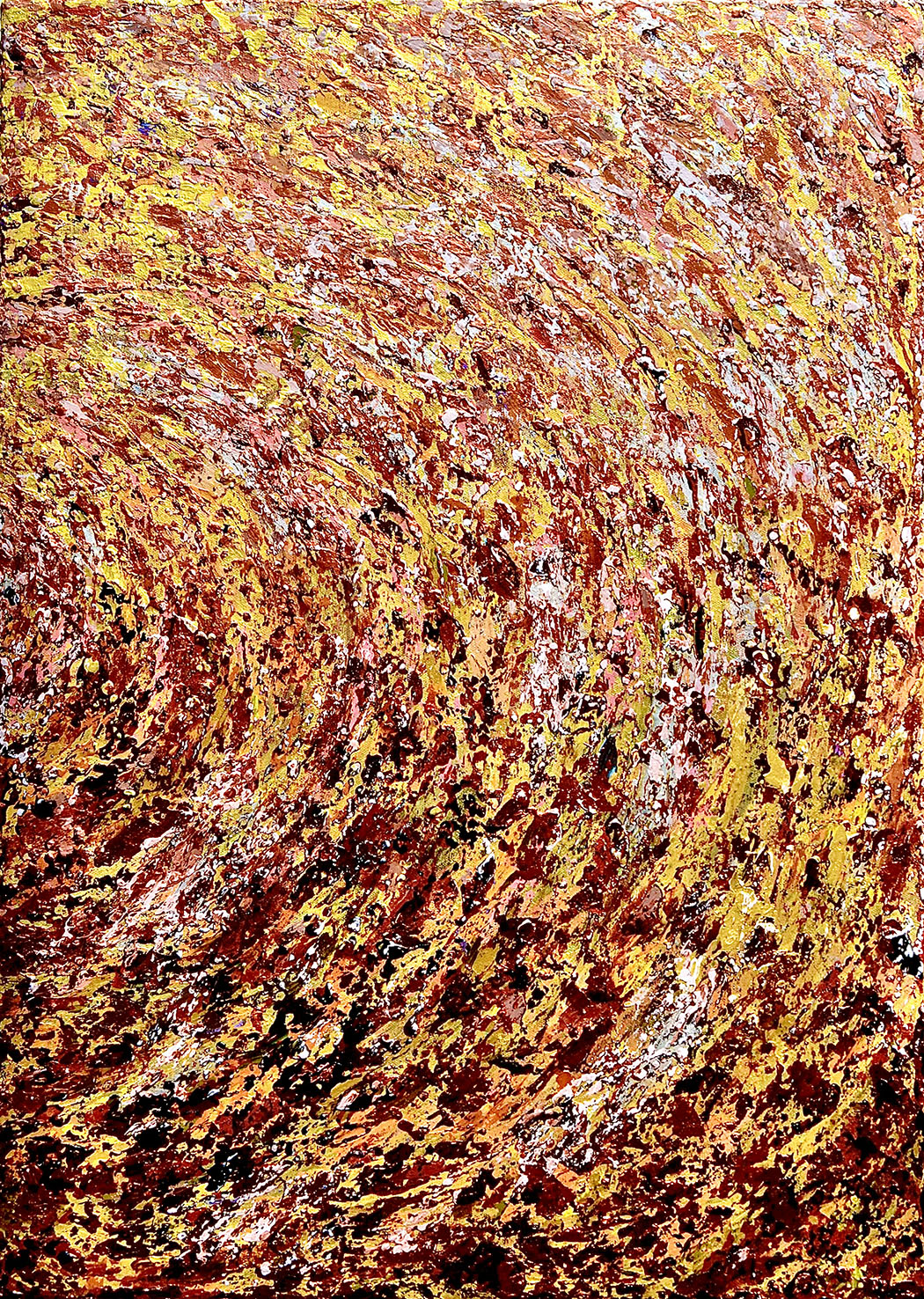 Wendy Kriz Evans | Sun-Love | 2024
Wendy Kriz Evans | Sun-Love | 2024
You mentioned that some of your painting was done ‘en plain air’. How does painting outside influence your work compared to painting in a studio?
The natural light alters my perception, prompting me to paint in ways I wouldn’t indoors. This challenges me to reconsider my artistic intentions, balancing the spontaneous outcome with my original vision. Being in the garden brings me immense joy, and this happiness permeates my work, making my art brighter in colour and rich with flowing, curved lines.
What advice would you give to aspiring artists who are looking to find their own style and voice in abstract art?
I struggled with this in school – now I focus on what brings me joy. I play with paint and colour until the piece naturally comes together, influenced by my thoughts. For instance, feeling guilty about spending time painting made me angry and led to dark red squares in the foundation of “Evolving Shades of Pink.”
My advice is to just start painting. Acrylics are great because you can layer and revise easily. My work often mirrors personal highs —like “Sun-Joy,” and lows – like “Evolving Shades of Pink,” which explores my struggles with femininity, particularly the challenging phase of menopause.
Even if you’ve spent 30 years working in insurance, you’re subconsciously shaping your own unique abstract style. Every moment, every experience contributes to your art, making it uniquely yours.
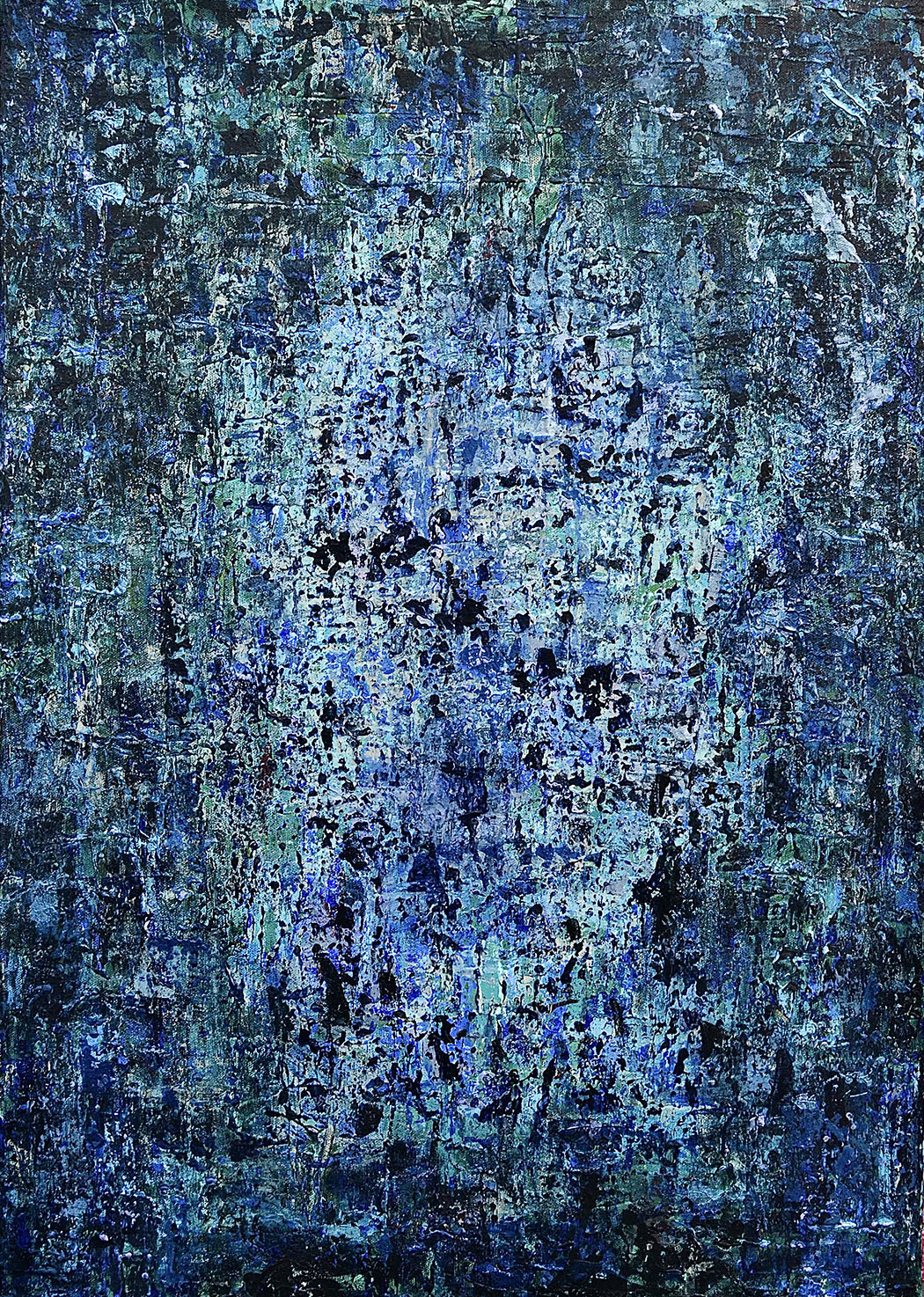 Wendy Kriz Evans | Study In Blue And Green | 2024
Wendy Kriz Evans | Study In Blue And Green | 2024
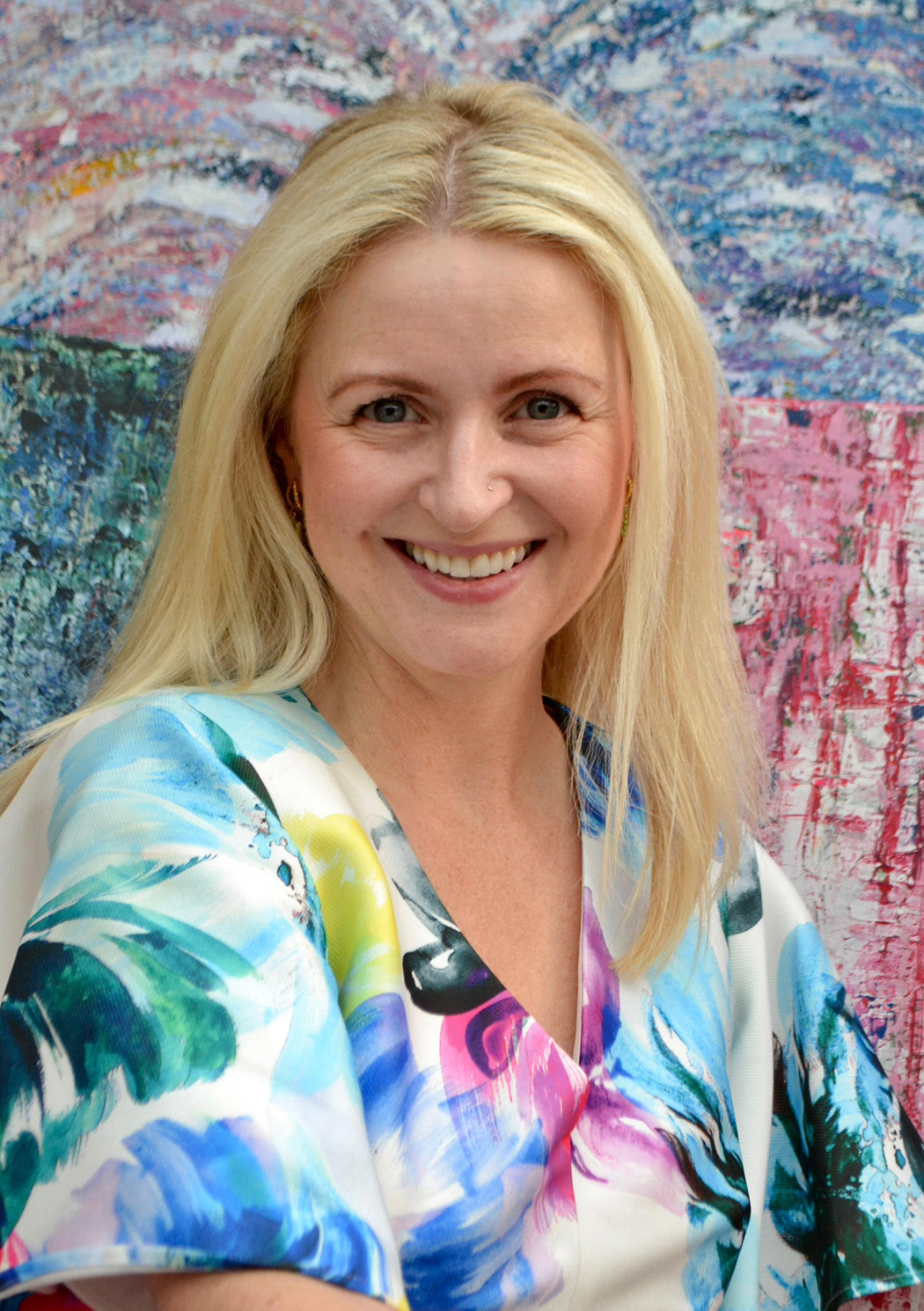
Zola S.
Very impressive!